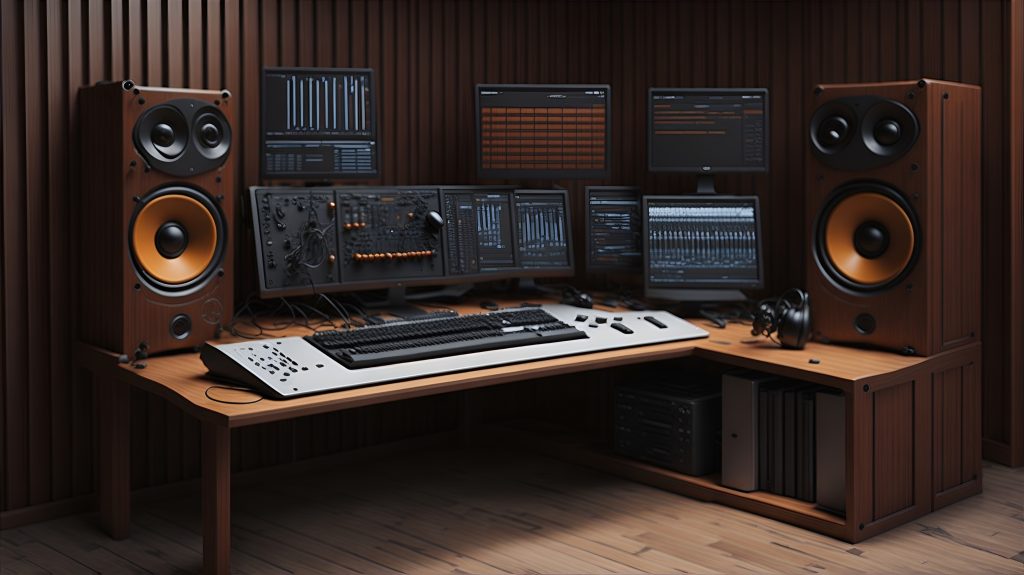A Digital Audio Workstation, commonly known as a DAW, is a special computer program used for making music. It can be installed on both Mac and Windows computers. Musicians and producers use DAW software to perform various tasks related to music creation, such as recording, editing, mixing, and mastering.
How a DAW Operates.
A DAW works by taking in analog audio signals, which usually come from an external device like a microphone or instrument, and turning them into digital data that a computer can understand. This data is displayed on a computer screen as visual representations, such as wavy lines for sound or musical notes on a staff. Users can then interact with this data on the screen to manipulate and shape the audio.
Functions of a Digital Audio Workstation.
Digital audio workstations offer several essential functions:
1. Recording and Editing Audio – DAWs come with tools for recording multiple audio tracks and playing them simultaneously. You can also edit these tracks, similar to how you can edit text in a word processor. This includes actions like cutting, copying, pasting, muting, and blending audio tracks. At any point during editing, you can listen to the digital audio through speakers or headphones.
2. Playing Virtual Instruments – DAWs allow you to control virtual instruments that mimic the sounds of real instruments like pianos, violins, and guitars. Musicians use external MIDI sequencer keyboards to send commands to the DAW. Additionally, MIDI keyboards can control synthesizers that produce unique electronic sounds.
3. Experimenting with Audio Effects – DAWs typically provide various effects processing features for audio files. These effects can enhance the sound, such as adding delay, reverb, compression, equalization (EQ), and echo. Some producers use third-party plugins (VST plugins) for specific effects. Automation features enable users to create volume changes, panning effects, and other audio adjustments.
4. Mixing and Mastering – Music producers often import audio tracks recorded by others into their DAW to mix them together and add final touches to achieve a polished sound.
Types of Digital Audio Workstations:
Numerous types of DAWs are available in the market, each catering to different needs:
1. Avid Pro Tools – Pro Tools is known for high-quality audio recording and editing. It has robust MIDI features and a long history of excellence in audio production.
2. Ableton Live – Popular among electronic music and hip-hop artists, Ableton Live provides an intuitive workflow for creating drum loops and adjusting beats in real-time.
3. Image-Line FL Studio – Previously known as Fruity Loops, FL Studio is favored by electronic dance music (EDM) producers, especially those who work with pre-recorded loops and drum sounds.
4. Apple Logic Pro – Logic Pro is a versatile DAW suitable for various music styles, but it is exclusive to macOS, offering seamless integration with Apple devices.
5. Garageband – Also owned by Apple, Garageband is a beginner-friendly, more affordable version of Logic Pro, available on macOS and iOS.
6. Steinberg Cubase Pro – Cubase Pro is an all-in-one DAW known for its audio recording capabilities and MIDI-based virtual instruments. It supports VST plugins and works on both Mac and Windows.
7. MOTU Digital Performer – Digital Performer is popular in the film scoring industry for syncing audio and MIDI to motion pictures. It offers sequencing functions similar to Pro Tools and Logic.
8. Audacity – Audacity is a free and open-source audio editing program with fewer features compared to paid DAWs. However, it works on multiple platforms, including Windows, Mac, Linux, and Unix-style.

